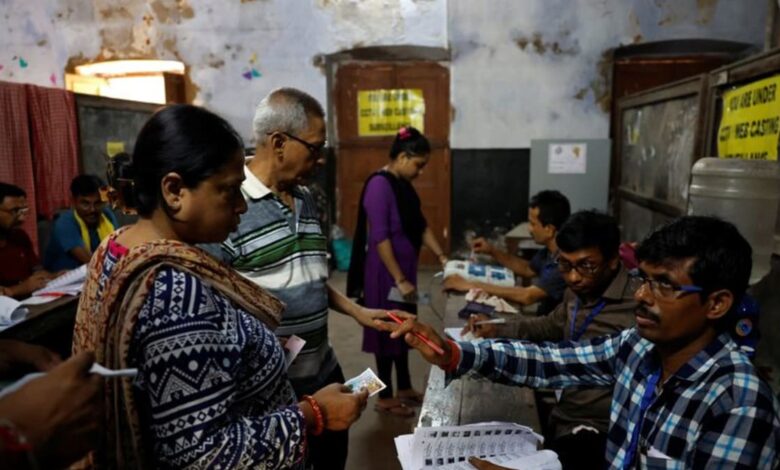Commentary: The extraordinary logistics of India’s election

ELECTRONIC VOTING MACHINES
A significant innovation in Indian elections is the deployment of electronic voting machines (EVMs). While EVMs underwent multiple testing phases, the 2004 general election and subsequent elections were completely organised using such machines.
Before their introduction, voting was often marred by incidents wherein miscreants used to capture a few polling stations to forcibly stamp the ballot papers in favour of their preferred candidate and scoot before the police could arrive.
While a few such incidents, called “booth capturing”, may not have altered the people’s verdict, the repeated occurrence vitiated the electoral process. The advent of sturdy battery-driven EVMs that record a maximum of four votes per minute has dramatically reduced instances of vandalism in polling stations.
Furthermore, video surveillance and webcasting of the voting process at many polling stations has been introduced to deter violent actions and to increase transparency.
CONCERNS ABOUT DIGITAL MANIPULATION
There were concerns in some quarters that the EVMs could be digitally tampered with. To dispel such concerns, the ECI organised a hackathon challenging detractors to prove that the EVMs could be manipulated, but no evidence was produced to show the system was vulnerable.
To increase the confidence in the EVMs, a Voter Verifiable Paper Audit Trail (VVPAT) machine was introduced, which enabled the electors to see a printout of their vote. The printouts of VVPAT machines are randomly counted to ensure that they tally with votes in EVMs.
In every polling station, a mock test of the EVM and VVPAT is conducted, and only after the agents of various political parties express satisfaction with the machines’ functioning will the formal election process be initiated.
Despite robust safety measures, petitions were filed in the Supreme Court of India expressing apprehensions about the possible manipulation of the EVMs. After due examination, the country’s top court declared that “the EVMs are simple, secure and user-friendly” and went on to add that “the incorporation of the VVPAT system fortifies the principle of vote verifiability”.





